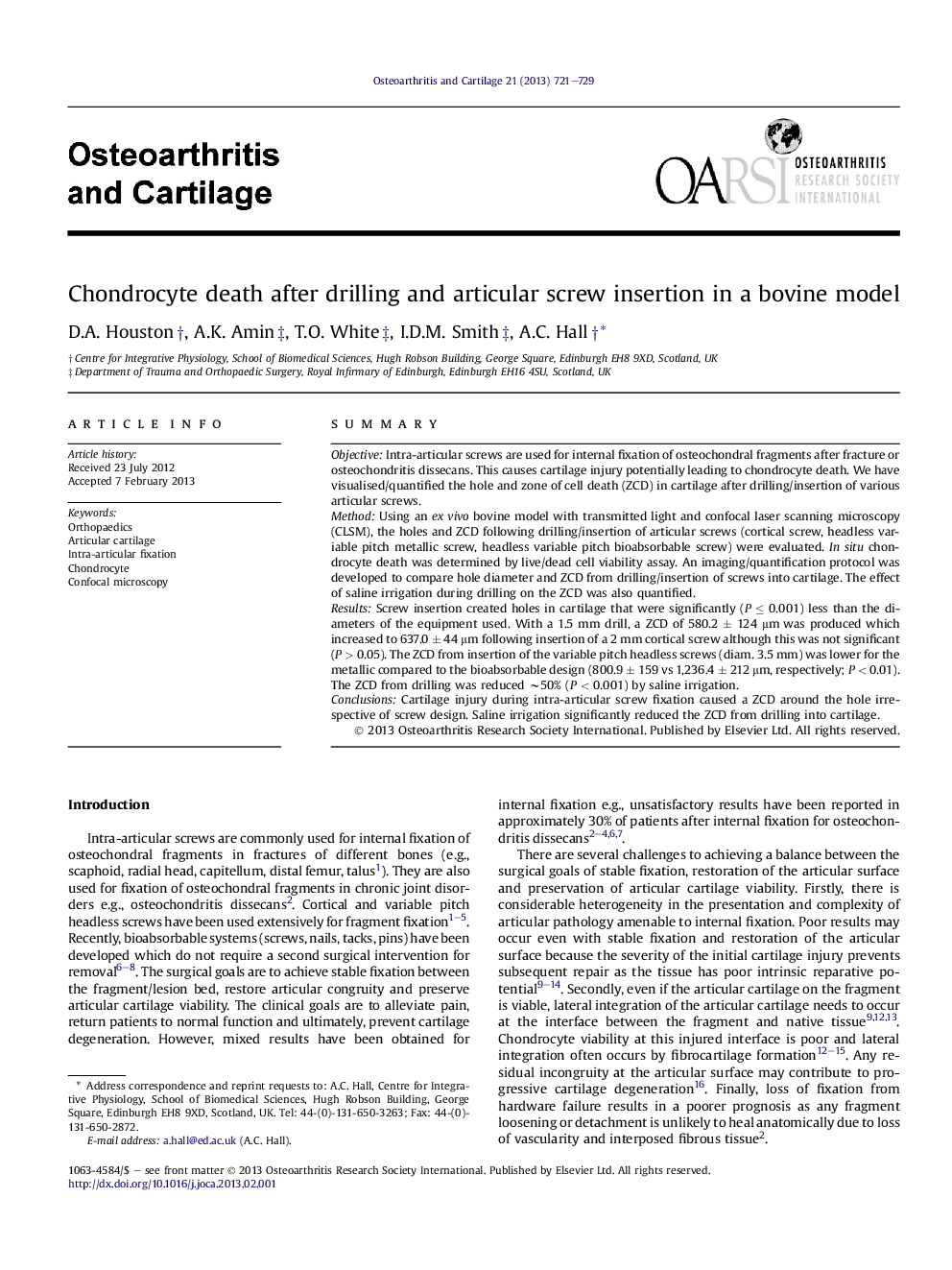| Article ID | Journal | Published Year | Pages | File Type |
|---|---|---|---|---|
| 3379736 | Osteoarthritis and Cartilage | 2013 | 9 Pages |
SummaryObjectiveIntra-articular screws are used for internal fixation of osteochondral fragments after fracture or osteochondritis dissecans. This causes cartilage injury potentially leading to chondrocyte death. We have visualised/quantified the hole and zone of cell death (ZCD) in cartilage after drilling/insertion of various articular screws.MethodUsing an ex vivo bovine model with transmitted light and confocal laser scanning microscopy (CLSM), the holes and ZCD following drilling/insertion of articular screws (cortical screw, headless variable pitch metallic screw, headless variable pitch bioabsorbable screw) were evaluated. In situ chondrocyte death was determined by live/dead cell viability assay. An imaging/quantification protocol was developed to compare hole diameter and ZCD from drilling/insertion of screws into cartilage. The effect of saline irrigation during drilling on the ZCD was also quantified.ResultsScrew insertion created holes in cartilage that were significantly (P ≤ 0.001) less than the diameters of the equipment used. With a 1.5 mm drill, a ZCD of 580.2 ± 124 μm was produced which increased to 637.0 ± 44 μm following insertion of a 2 mm cortical screw although this was not significant (P > 0.05). The ZCD from insertion of the variable pitch headless screws (diam. 3.5 mm) was lower for the metallic compared to the bioabsorbable design (800.9 ± 159 vs 1,236.4 ± 212 μm, respectively; P < 0.01). The ZCD from drilling was reduced ∼50% (P < 0.001) by saline irrigation.ConclusionsCartilage injury during intra-articular screw fixation caused a ZCD around the hole irrespective of screw design. Saline irrigation significantly reduced the ZCD from drilling into cartilage.
